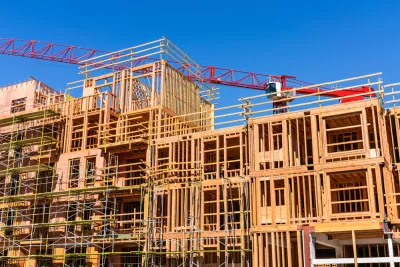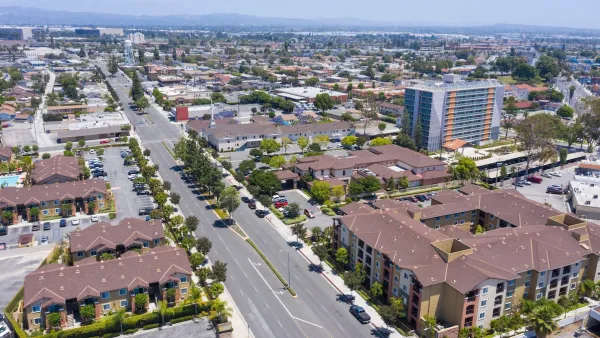Meanwhile, cities say the state’s housing needs assessment sets impossible goals for affordable housing production.

California’s affordable housing crisis continues to create conflict between cities and the state, which recently implemented stricter enforcement measures for its Regional Housing Needs Assessment, an evaluation conducted every eight years that calculates the state’s housing needs. “The state determined the six-county region covered by the Southern California Association of Governments, or SCAG, needs 1.34 million new homes by the end of the decade, an average of nearly 168,000 homes per year, adding enough housing for a population roughly the size of Chicago.”
According to an article by Jeff Collins in The Orange County Register, “South Pasadena remains an example of how some Southern California cities are failing to adequately plan for future housing needs, pro-housing advocates say.” The article cites examples of unrealistic projections, which include sites that have little chance of redevelopment. “South Pasadena’s first draft housing plan envisioned building 49 homes on the 1.2-acre site that now houses City Hall and the police and fire stations. The plan was dropped in the revised ‘housing element’ released on April 21 because the city had no firm plans for relocating City Hall.” Collins notes that the city revised its plan in April to reflect more realistic projections.
In the past, the state rubber-stamped city housing plans even when they had a low chance of meeting their targets. “Now, new laws require cities to fully document why each site has a reasonable chance of getting developed by October 2029, the end of the current planning cycle. New measures also require municipalities to include plans for low-income housing in ‘high resource’ affluent neighborhoods and to take steps to undo historic patterns of segregation.”
The issue goes far beyond South Pasadena. “A 2021 analysis of 10 draft housing elements by Mapcraft Labs concluded that about 70% of proposed housing sites were unlikely to provide the projected number of units by the end of the decade.”
City leaders, meanwhile, argue that state allocations set unrealistic goals. “We are a built-out city, and our numbers went from 63 (homes) in the last cycle to 2,067,” said South Pasadena Community Development Director Angelica Frausto-Lupo.
FULL STORY: Southern California housing plans contain ‘fake sites,’ lack analysis, critics say

Analysis: Cybertruck Fatality Rate Far Exceeds That of Ford Pinto
The Tesla Cybertruck was recalled seven times last year.

National Parks Layoffs Will Cause Communities to Lose Billions
Thousands of essential park workers were laid off this week, just before the busy spring break season.

Retro-silient?: America’s First “Eco-burb,” The Woodlands Turns 50
A master-planned community north of Houston offers lessons on green infrastructure and resilient design, but falls short of its founder’s lofty affordability and walkability goals.

Test News Post 1
This is a summary

Analysis: Cybertruck Fatality Rate Far Exceeds That of Ford Pinto
The Tesla Cybertruck was recalled seven times last year.

Test News Headline 46
Test for the image on the front page.
Urban Design for Planners 1: Software Tools
This six-course series explores essential urban design concepts using open source software and equips planners with the tools they need to participate fully in the urban design process.
Planning for Universal Design
Learn the tools for implementing Universal Design in planning regulations.
EMC Planning Group, Inc.
Planetizen
Planetizen
Mpact (formerly Rail~Volution)
Great Falls Development Authority, Inc.
HUDs Office of Policy Development and Research
NYU Wagner Graduate School of Public Service




























